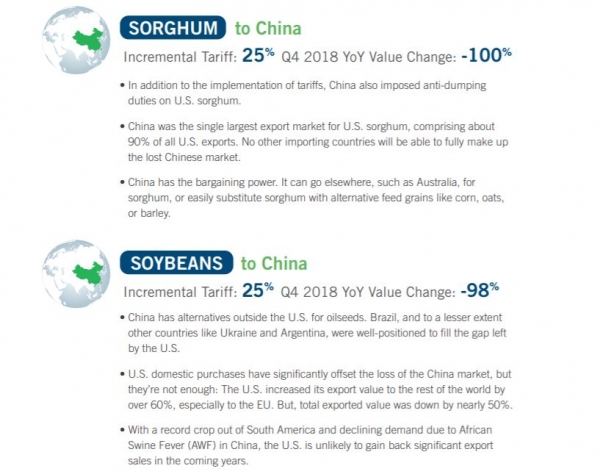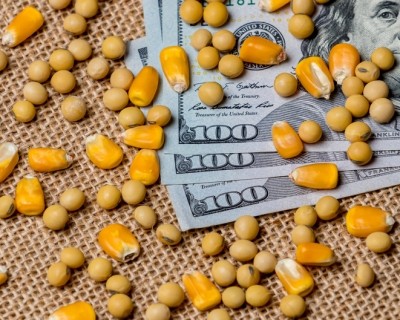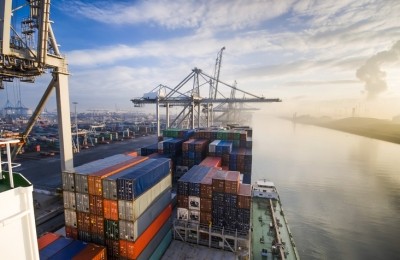US feed crop, agricultural producers bear brunt of foreign tariffs

Over the past two years, the US has clashed with several trading partners. The tit-for-tat retaliatory tariffs have impacted the economies on both sides. Mexico, Canada, the EU, China, Korea, and Japan have all been targets for trade negotiation and renegotiation by the US, and the flow of US agricultural goods have felt the impact.
Analysts with the Colorado-based, CoBank, evaluated a selection of 11 US feed ingredients and agricultural products facing retaliatory tariffs to assess who ended up paying those costs.
Their review found that bargaining power between exporter and importers dictated who paid the tariff and how much of it and, and showed that, for the majority of the products examined, US producers footed the bill.
One takeaway from the analysis is that “the optimal length of a trade war is zero days,” said Tanner Ehmke, manager with CoBank’s Knowledge Exchange. “There’s nothing to be gained and nothing good comes from a trade war,” he added.
“This is dream come true for Brazil, Russia, Ukraine and any other major exporter – Chile has a lot of specialty crops, Europe [has] dairy – everybody else is going to benefit but us and China,” he told us.
“Long term we’re losing bargaining power, which means, in future trade wars, we’d be forced to be the ones who absorb the cost of further retaliatory tariffs, and this gives us less flexibility in negotiations because we’re creating competition for ourselves in the long term,” Ehmke said. “The longer this trade war continues – the more bargaining power we whittle away.”
“When a country retaliates with tariffs on agricultural inputs from the US, it’s not exclusively their burden,” he said. “We share that burden … and frequently all of the burden – because we don’t have the bargaining power to simply control the dialogue on trade issues.”

Tariff related damages
The CoBank review assessed impact on products such as soybeans, sorghum, whey, beef, pork and ham going from the US to Canada, China and Mexico during the fourth quarter of 2018. The report also examined several major importers, rather than only looking at the market with China, to explore the effect of retaliatory tariffs in different countries and different markets.
“Across the board, it’s going to vary, not every market is going to respond the same,” he said. “We tried to pick those commodities that are important.”
"Trade tariffs are levied by the importing country on the value of the imported good, and so we analyzed the change in value traded, taking into account both the change in price and volume,” they added.
Several tariffs have been placed on US products, but many of them were started in the spring and summer of 2018, comparisons were drawn with Q4 2017, said the authors.
When comparing the export market for US soybeans to China, which faced a 25% tariff at that time, the group found that the year on year value change dropped 98%, they said. The US is considered unlikely to regain significant export sales to China in the next few years as the country does not have much market bargaining power.
Bargaining power relates to how competitive a market is, said Ehmke. Adding, “If you’ve got a lot of exporters trying to compete in one import market, then that importer has the choice; if they don’t like the terms, or they don’t like the product, they can go somewhere else.”
With soybeans, for example, there are two factors to consider - the US faces competition from South America for soybeans and it also faces competition from producers of other kinds of oilseeds.
“Chinese crushers don’t necessarily have to use soybeans – they could use sunflower seeds, they could use rapeseed or they can replace soybeans with other oilseeds, in addition to sourcing soybeans from other countries – that gives the buyer in China more buying power,” he said. “If they want to, they can completely step away from the US, which they’ve done during this trade war, that speaks to their bargaining power."
China also had more bargaining power when it came to buying sorghum, they noted. That US feed grain also faced a 25% tariff at the end of 2018 and saw its year-over-year value fall 100%.
On the animal protein side, the US saw a 20% tariff on pork products going to Mexico and a related loss of 31% in value, they said. Although Mexico did not have many options for fresh pork products outside of the US, the country increased its domestic production to reduce imports.
Similarly, US pork products faced a 50% tariff from China at the time and saw year-over-year value decline by 32%, they said. The expectation is that trade will continue to be dictated by politics.
Beef exports to Canada also declined by about 15% following the imposition of a 10% tariff on the product, the authors said. Ingrained supply chains and a small tariff made it harder to substitute products.
Whey exports from the US to China also declined, seeing about a 42% drop in value, the authors observed. The product faced a 25% tariff. Additionally, there were fears that China would need less of the hog feed ingredient, however, it has continued to import the ingredient, found the report.
However, there may be little that an exporter or producer can do to ease the trade situation other than share in the retaliatory tariffs by dropping export prices, said Ehmke. “That’s how they’ve tried to maintain that relationship and that market, by dropping the export price. That’s going to work for a while, but the lower price ultimately comes back to the producer,” he added.
The trade situation also may damage the US’ reputation as a reliable trading partner, he said. “Buyers overseas are going to start sourcing products from other countries as a hedge against the US,” he added.
“Once those trade relationships become familiar and formalized it’s going to be a lot harder to get them back and there are some of those markets we may never get back fully,” he said.














